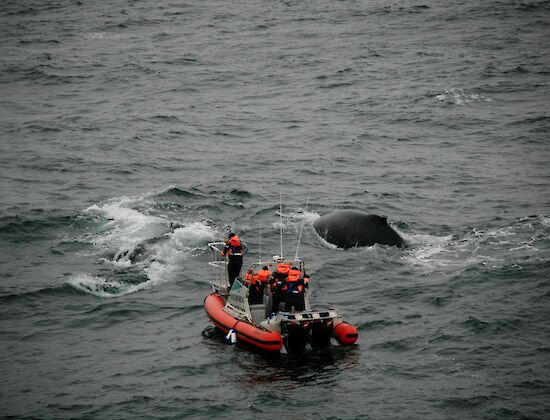Population structure and distribution
To conserve and manage Australia's marine mammals it is necessary to identify each population and assess each population's current size, structure, distribution and, in the case of previously harvested species, each population's exploitation history.
The Australian Marine Mammal Centre's scientists, together with other Australian and international colleagues, have initiated studies to investigate the migration behaviour, population structure and exploitation history of Australia's humpback whale populations. This will be achieved principally through satellite tracking and population genetic analyses. The genetic work will analyse biopsy samples collected off the east and west coasts of Australia and from east Antarctica to describe the movement of animals between the two recognised Australian breeding populations and the distribution of these populations on their Antarctic feeding ground where they were killed in huge numbers by commercial whaling operations through the 20th century.
Genetic data generated by the study of Australia's humpback whales will also be used to describe the links between the east coast population and breeding populations found throughout the western Pacific. These Pacific populations have shown a very slow rate of recovery since the cessation of commercial whaling and remain endangered.
The AMMC's geneticists are Simon Jarman, Mike Double and Natalie Schmitt.


